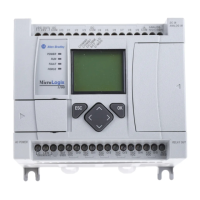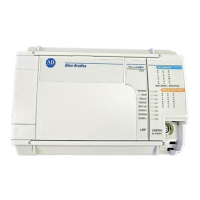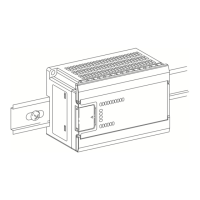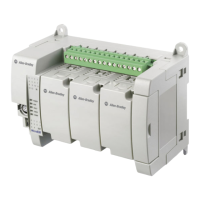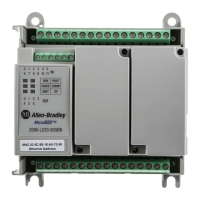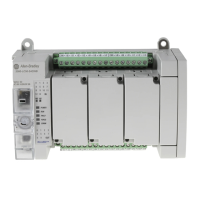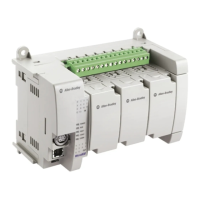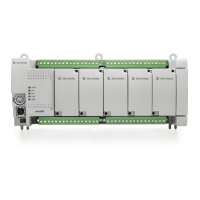Publication 1766-RM001A-EN-P - October 2008
494 Socket Interface Using CIP Generic Messaging
• SocketType : Specify 1 for TCP, 2 for UDP. 0 or all others are
reserved.
• Reserved : Specify 0.
• Structure of SocketAddr :
• Family : Specify the address family. Must be 2.
• Port : Specify a local port number, or set to 0 (the local port
number will be chosen by Ethernet subsystem). For TCP client
operations, specify 0 unless you want a specific local port
number. For TCP server communications, specify the port
number on which to accept incoming connection requests. For
UDP, to receive datagrams on a specific port, you must specify a
local port number.
• IPAddr : Specify an IP address. Typically, set to 0 (any address).
• SockInstance : Contains Instance number of the socket.
Attribute 0
Data Table Address (Send) Specify N file
Size in Bytes (Send) 12 bytes
Data Table Address (Receive) Specify N file
Size in Bytes (Receive) 4 bytes
Extended Routing Info File(RIX) Specify RIX file
To Address in MultiHop tab 127.0.0.1
Considerations :
Use the instance returned by CreateSocket on subsequent service requests.
Use a relay ladder instruction to move the returned instance number from a
CreateSocket service into the MGx:y.TFN element of a MSG instruction.
N file for sending contains: 12 bytes
Nx:0 Nx:1 Nx:2 Nx:3 Nx:4, Nx:5
SocketType
(2 bytes)
Reserved
(2 bytes)
SocketAddr
Family
(2 bytes)
SocketAddr
Port
(2 bytes)
SocketAddr
IP Address
(4 bytes)
N file for sending contains: 4 bytes
Nx:0 Nx:1
SockInstance
(2 bytes)
Reserved
(2 bytes)
CIP Generic Msg Parameter Description
efesotomasyon.com - Allen Bradley,Rockwell,plc,servo,drive
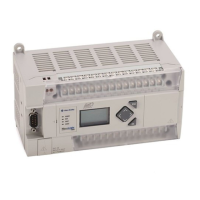
